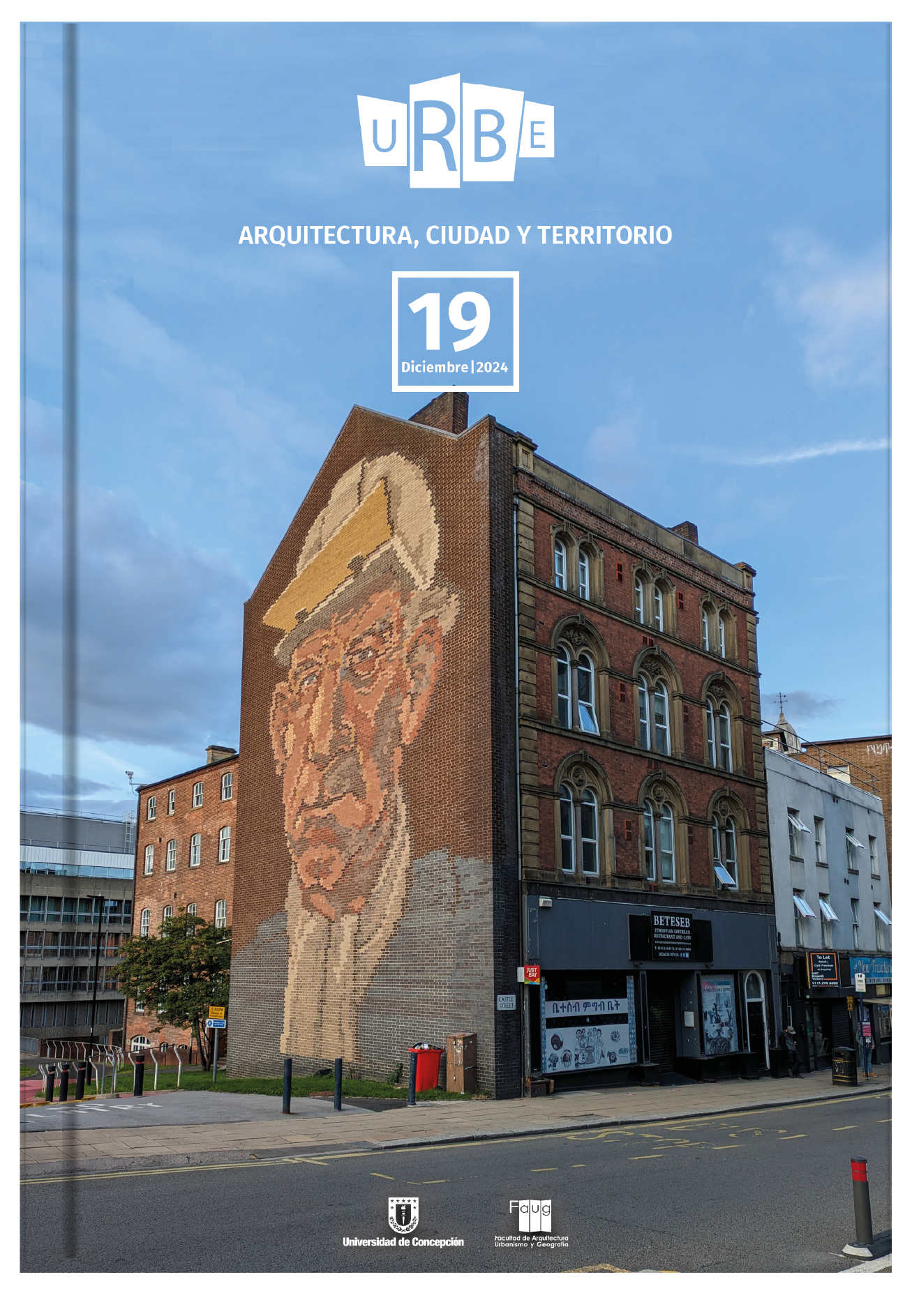Standards and Criteria for Environmental Comfort Used in University Libraries: Lighting, Acoustics, Air Quality, and Ergonomics
DOI:
https://doi.org/10.29393/UR19-4NCAA10004Keywords:
architecture, university libraries, environmental comfort, standards, criteriaAbstract
University libraries are key information hubs that blend advanced technology, functional design and digital and physical resources to provide support for studying, literacy, and knowledge transfer. Environmental comfort -lighting, air quality, acoustics, and ergonomics- is crucial for user experience and academic performance. This document review aims to identify applicable regulations and standards from 10 official databases: ISO, ASHRAE, ASQ, BSI, IES, ANSI, IFLA, ALA, REBUIN, and CABID-Chile. A total of 84 standards related to the design, construction, and remodelling of university libraries. These findings provide architects and librarians with a comprehensive understanding of standards to ensure quality and comfort in university libraries. Future research should explore methods to make these standards more accessible through open platforms or integration into library regulations.
Downloads
References
Ackerman, J. S. (1966). The architecture of the Renaissance. Penguin Books.
Alonso, J. (2021). Bibliotecas del siglo XXI: desafíos y tendencias. Revista Española de Documentación Científica, 44(1), e301.
Association of College and Research Libraries (ACRL). (2016). Framework for Information Literacy for Higher Education. American Library Association.
Bawden, D. (2017). Libraries in the information society: Core concepts and practical applications. Facet Publishing.
Bisbrouck, M.F. y Renoult, D. (1993). Construire une bibliothèque universitaire. Éd. du Cerclede la Librairie.
Bridger, D., y Robinson, J. (2008). Acoustic Design in University Libraries: A Case Study of Noise Control. Journal of Acoustic Engineering, 35(1), 23-34.
Consejo de Rectores de Universidades chilenas. (2003). Estándares para bibliotecas universitarias chilenas. Comisión Asesora de Bibliotecas y Documentación.
Consejo de Rectores de Universidades chilenas. (2020). Estándares para bibliotecas universitarias chilenas. Comisión Asesora de Bibliotecas y Documentación.
Ching, F. D. K. (2014). Architecture: Form, space, and order (4th ed.). Wiley.
Chow, W. y Ellis, M. (2012). Ergonomics in Library Design: Creating User-Centered Spaces. Library Management, 33(6/7), 365-379.
Drucker, P. F. (2007). The effective executive: The definitive guide to getting the right things done. HarperBusiness.
Edwards, J. y Fisher, K. E. (2002). Designing Sustainable Libraries: Planning and Building for the Future. ALA Editions.
Emmitt, S. (2014). Building: Theory and practice. Wiley-Blackwell.
Espacio Europeo de Educación Superior. (2021). European Standards and Guidelines for Quality Assurance in Higher Education. https://ecahe.eu/home/esg/
Fanger, P. O. (1970). Calculation of thermal comfort: Introduction to indoor climate and the ASHRAE thermal comfort standard. McGraw-Hill.
Fanger, P. O. (1970). Thermal comfort: Analysis and applications. McGraw-Hill.
Faulkner-Brown, H. (1973). Libraries for the future: The role of libraries in a changing world. Library Association.
Faulkner-Brown, H. (1997). Diseño de grandes edificios para bibliotecas. En: A. Large (Ed.), Informe Mundial sobre la Información 1997-1998. 272-283. Unesco, CINDOC.
Fisk, W. J. (2010). Health and Comfort in Libraries: The Impact of Indoor Environmental Quality on Student Learning and Wellbeing. Indoor Air Quality Review, 22(3), 250-265
Fuentes Freixanet, V. A. (1991). Criterios de adecuación Bioclimática en la Arquitectura: Confort ambiental. https://www.universidadejemplo.edu/confortambiental
Gallo León, J. M. (2012). Evaluación de bibliotecas: el decálogo de Gallo. Anuario ThinkEPI, 6, 268-270.
Gillen, C. y Pierce, S. (2007). Indoor air quality in academic libraries: A review of case studies and trends. Building and Environment, 42(5), 2250-2258. https://doi.org/10.1016/j.buildenv.2006.06.026
Givoni, B. (1998). Climate considerations in building and urban design. Van Nostrand Reinhold.
Hernández Sampieri, R., Fernández Collado, C. y Baptista Lucio, M. (2014). Metodología de la investigación (6ª ed.). McGraw-Hill.
Higgins, J. (2014). Psychological and Aesthetic Aspects of Library Design: A Review of Case Studies. Library Journal, 65(2), 120-135.
Illuminating Engineering Society. (2011). IES Lighting Handbook: Reference & Application. New York, NY: Illuminating Engineering Society of North America Collection.
International Federation of Library Associations and Institutions (IFLA). (1980). Library Buildings: International Conference of Building and Equipment Section. Proceedings. The Hague.
International Federation of Library Associations and Institutions (IFLA). (2007). Library Buildings and Equipment Section. Guidelines for Planning the Library Building. The Hague.
International Federation of Library Associations and Institutions (IFLA). (2009) IFLA Library Buildings and Equipment Section. The Hague.
International Organization for Standardization (ISO). (2012). ISO/TR 11219:2012 - Information and documentation — Qualitative conditions and basic statistics for library buildings — Space, function and design. ISO.
International Organization for Standardization. (2015). ISO 9000:2015 - Sistemas de gestión de la calidad - Fundamentos y vocabulario. ISO.
International Organization for Standardization (ISO). (2015). ISO 11799:2015 Information and documentation — Document storage requirements for archive and library materials. ISO.
Library Association. (1996). Guidelines for Colleges Libraries: recommendations for performance and resourcing. Edited by Kathy Ennis. London Library Association
Macaulay, D. (2018). The way we build: A new approach to architecture. Houghton Mifflin Harcourt.
Martín Puig, M. (2016). La mutación de la biblioteca en los inicios del siglo XXI [Tesis de maestría no publicada]. Escola Superior Gallaecia. http://hdl.handle.net/10400.26/17956
McDonald, A. (2001). Guidelines for Library Buildings and Library Services. Walter de Gruyter.
Meyer, W. (1995). The Architecture of Richard Morris Hunt. Princeton Architectural Press
Mittler, E. (2008). Evaluación de las bibliotecas universitarias alemanas: análisis comparativo con base en una encuesta online a responsables de bibliotecas universitarias en Alemania. FESABID: Boletín de la Federación Española de Sociedades de Archivística, Biblioteconomía, Documentación y Museística, (40), 17-25.
Modelo, P. R., Torada E. G., González O. P., y Fernández M. G. (2001). Ergonomía 4 El trabajo en oficinas. confort sonoro. Edicions UPS.
Morris, R. L. (2017). Building design and construction handbook (10th ed.). McGraw-Hill Education.
Mundt, J. y Callahan, A. (2008). The thermal environment in libraries: A guide for best practice in university library buildings. International Journal of Architectural Engineering and Design, 10(2), 113-124.
Neufert, E. (1994). Arte de Proyectar en Arquitectura (1a. ed.). Gustavo Gili.
Neufert, E. (2013). Arte de Proyectar en Arquitectura, 16ed. Gustavo Gili.
REBIUN. (1999) Normas y directrices para bibliotecas universitarias y científicas: documentos de trabajo. 2º ed. https://www.rebiun.org/sites/default/files/2017-11/Patrimonio-%20Normas%20y%20directrices%20para%20bibliotecas%20universitarias_0.pdf
Rogers, R. (2013). The architecture of Richard Rogers: The architect and the city. Thames & Hudson.
Sunderland, S. (2016). Lighting design in libraries: Balancing function and aesthetics. Library Trends, 65(4), 616-633.
Salter, C. (1998). Acoustic for libraries. William Stout Publishers.
Santi Romero, S. (2003). La arquitectura de la Biblioteca: recomendaciones para un proyecto integral. Colegio de Arquitectos de Catalunya i Diputación Barcelona.
Vitruvius, M.. (1960). Vitruvius: The ten books on architecture. (M. H. Morgan, trans.). Dover Publications.
Published
How to Cite
Issue
Section

This work is licensed under a Creative Commons Attribution 4.0 International License.
Revista URBE. Arquitectura, Ciudad y Territorio tiene licencia de Creative Commons Attribution 4.0 International (CC BY 4.0) y debe citarse correctamente.









